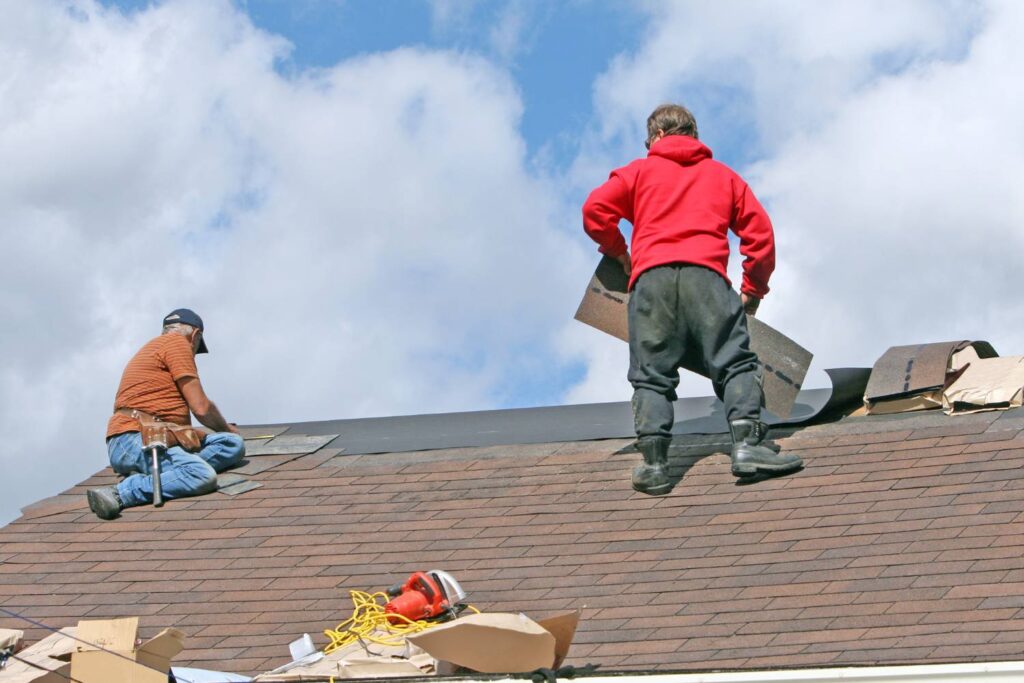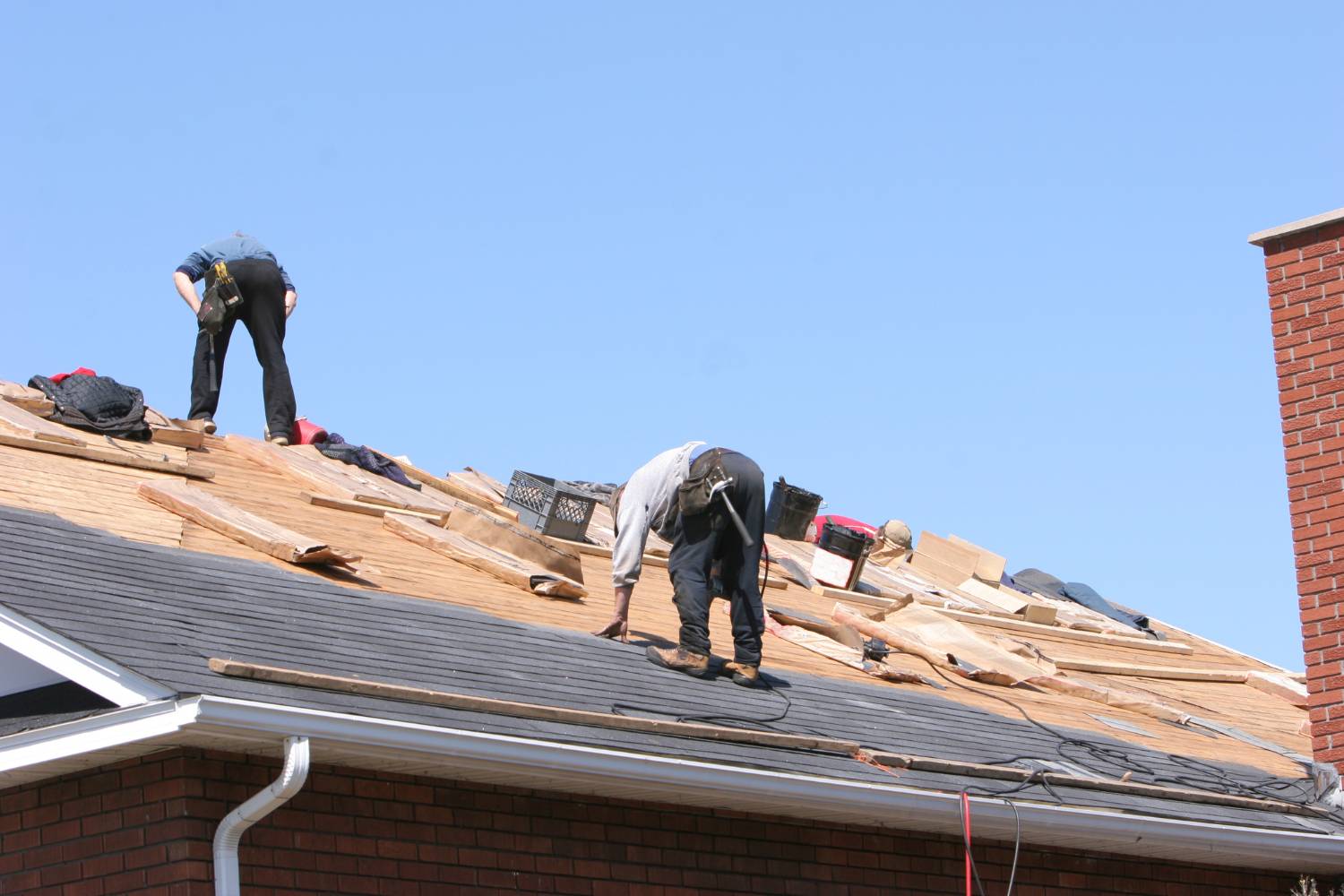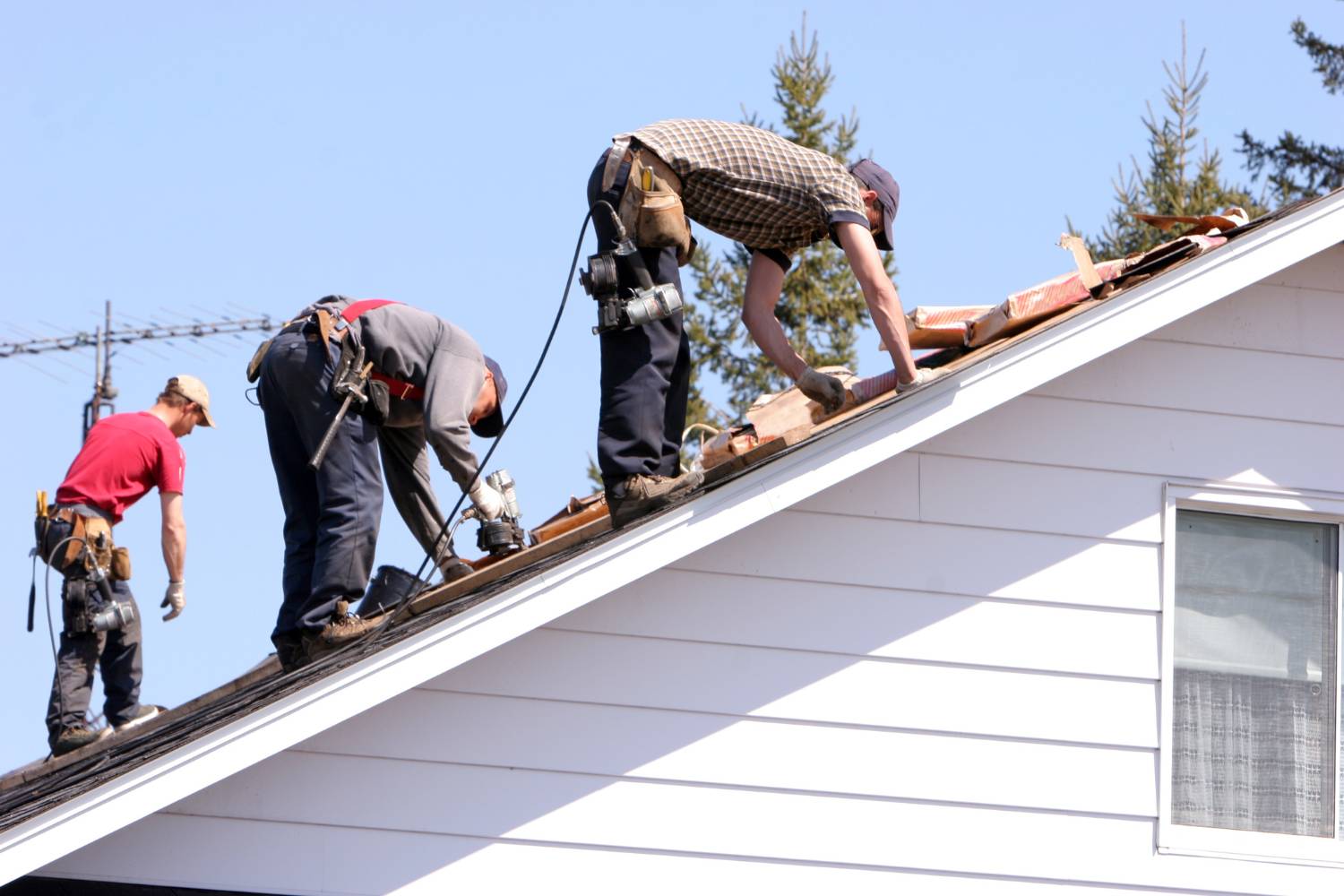Maintaining a roof is one of the most critical aspects of home upkeep, yet it often goes overlooked until significant issues arise. Roof restoration is a comprehensive process that not only addresses current problems but also enhances the overall longevity and performance of your roof.
This process involves repairing, cleaning, and repainting your roof to restore its original condition and ensure it can withstand the elements for years to come.
In this guide, we will explore the key benefits of roof restoration, signs that indicate your roof may need attention, the detailed steps involved in the restoration process, and tips for selecting a reliable roof restoration service.
Whether you're dealing with cracked tiles, internal leaks, or simply an aging roof, this comprehensive overview will provide you with the insights needed to make informed decisions about maintaining and enhancing your roof.
Benefits of Roof Restoration
Roof restoration is a crucial aspect of home maintenance that involves repairing, cleaning, and repainting your roof to ensure it remains in optimal condition. This process offers numerous benefits that can enhance the longevity, safety, and value of your home. Here are some key benefits of roof restoration:
Increases Property Value
- Aesthetic Appeal: Restoring your roof improves its appearance, which can significantly enhance the curb appeal of your home. A well-maintained roof is one of the first things prospective buyers notice, making your property more attractive.
- Higher Market Value: A restored roof increases your home's market value, allowing you to potentially sell it at a higher price.
Prolongs Roof Longevity
- Extended Lifespan: Regular roof restoration can add years to your roof's life by addressing minor issues before they escalate into major problems, delaying the need for a costly roof replacement.
- Durability: Restoration ensures your roof can withstand harsh weather conditions, thereby maintaining its structural integrity for a longer period.
Enhances Energy Efficiency
- Improved Insulation: A well-maintained roof provides better insulation, reducing the need for excessive heating and cooling. This leads to lower energy bills and a more comfortable living environment.
- Prevents Heat Loss: By sealing gaps and cracks, roof restoration prevents heat from escaping during winter and keeps your home cooler during summer.
Prevents Leaks And Water Damage
- Leak Prevention: Restoration addresses any cracks or broken tiles that could lead to leaks, protecting your home from water damage.
- Mould and Mildew Prevention: By preventing leaks, restoration also helps avoid mould and mildew growth, which can cause health issues and further damage to your home.
Signs Your Roof Needs Restoration
Maintaining your roof is crucial for the protection and longevity of your home. Over time, even the most durable roofs will show signs of wear and damage. Recognising these signs early can save you from costly repairs and ensure your home remains safe and secure. Here are some key indicators that your roof may need restoration.
Cracked Or Missing Roof Tiles
- Cracked Tiles: Cracked tiles can occur due to weather exposure, age, or physical damage. These cracks allow water to penetrate, leading to internal leaks and potential structural damage.
- Missing Tiles: Missing tiles can expose the underlayment to the elements, causing further damage and leaks. If several tiles are missing or damaged, a roof restoration may be necessary.
Internal Or Ceiling Leaks
- Water Stains: Dark spots, bubbling paint, or water trails on your ceiling are signs of leaks. These leaks can damage wooden beams, insulation, and the overall structural integrity of your home.
- Mould and Mildew: Persistent moisture from leaks can lead to mould and mildew, which are health hazards and can further damage your home's structure.
Fading Roof Colour
- Colour Loss: Fading indicates that the protective coating on your roof has worn off, leaving it vulnerable to damage. A restored roof can regain its original appearance and protection.
- Aesthetic Appeal: Fading can also detract from your home's curb appeal and reduce its market value.
Water Damage
- Structural Issues: Water damage is a common sign that your roof needs attention. It can weaken the roof's structure, leading to more serious issues like rot and decay.
- Immediate Action: Addressing water damage promptly can prevent more extensive repairs and maintain the integrity of your home.
Age Of The Roof
- Lifespan: Most roofs are designed to last 20-50 years, depending on the material. If your roof is nearing the end of its lifespan, restoration can extend its durability.
- Visible Wear: Older roofs often show signs of wear, such as blistering paint, sagging, and deterioration, indicating the need for restoration.
The Roof Restoration Process
Roof restoration is a comprehensive process that revitalises a roof's structure and appearance, extending its lifespan and improving its performance. This process involves several critical steps, each essential to ensuring the roof's durability and effectiveness. Here's a detailed guide to the roof restoration process.
Roof Inspection And Assessment
The restoration process begins with a thorough inspection by roofing professionals, assessing the roof's condition and identifying any damage or issues. A detailed report detailing necessary repairs, treatments, and a customised restoration plan is provided, tailored to the specific needs of the roof.
Roof Repairs
For tiled roofs, broken or missing tiles are replaced. For metal roofs, rusty or damaged sheets and loose screws are addressed. Ridge capping is inspected and repaired, and any cracked pointing is reapplied with a flexible product. Damaged valley irons and other structural components are removed and replaced to ensure the roof's integrity.
Pressure Washing
The entire roof surface is cleaned using a high-pressure washer to remove dirt, debris, moss, and any loose materials. This step is crucial for preparing the roof for subsequent treatments and ensuring that all surfaces are clean and ready for restoration. Pressure washing not only cleans the roof but also reveals any additional damage that may need attention.
Preparation And Treatment
An anti-moss and algae treatment is applied to sterilise the roof, preventing regrowth that could damage the new roof membrane. The roof surface is prepared for priming and sealing, ensuring that it is in optimal condition for these protective treatments.
Roof Priming And Sealing
A primer suitable for the roof's specific condition is applied. This step is particularly important for older roofs or those with significant wear, as it provides a protective base layer. The roof is then sealed to protect against water infiltration and other environmental factors. This step enhances the roof's waterproof capabilities and prepares it for the final membrane application.
Membrane Application And Painting
The roof membrane, a protective coating, is applied to provide a final layer of defence against the elements. This membrane is typically an elastomeric polymer that offers flexibility and durability. The roof is then painted with high-quality paint, such as Dulux Acratex, which comes in various colours and finishes. This step not only enhances the roof's appearance but also adds an extra layer of protection.
Choosing a Roof Restoration Service
Selecting the right roof restoration service is a crucial decision that ensures your roof is properly repaired and maintained. A well-restored roof can extend its lifespan, improve its appearance, and prevent future damage. Here are key factors to consider when choosing a roof restoration service.
Experience And Expertise
- Track Record: Look for a company with a proven history of successful projects. Experienced roofers have the knowledge and skills to handle complex restoration tasks.
- Specialisation: Ensure the company specialises in roof restoration and is familiar with various roofing materials and techniques.
Reputation And Reviews
- Client Testimonials: Research the company's reputation by reading reviews and testimonials from past clients. Positive feedback is a good indicator of reliable and high-quality service.
- References: Ask for references and speak directly with previous clients to gauge their satisfaction with the work performed.
Licensing And Insurance
- Legal Compliance: Verify that the company is licensed to operate in your area. Licensing ensures they meet local regulations and standards.
- Insurance Coverage: Ensure the company has adequate insurance to protect against potential liabilities and damages during the restoration process.
Cost And Value
- Detailed Estimates: Obtain detailed quotes from multiple service providers. Compare the scope of work, materials, and costs to ensure you are getting a fair price.
- Value Over Price: Don't base your decision solely on the lowest price. Consider the overall value, including quality of materials, warranty, and customer service.
Guarantees And Warranties
- Workmanship Warranty: A company that offers warranties on their work shows confidence in their services. Ensure the warranty covers both materials and labour.
- Product Guarantees: Check if the materials used come with manufacturer warranties for added protection.
Communication And Professionalism
- Effective Communication: Choose a company that communicates clearly and keeps you informed throughout the restoration process. Good communication ensures the project stays on track and meets your expectations.
- Professional Conduct: Assess the professionalism of the service provider from your initial contact. Professionalism in handling inquiries and providing information reflects their approach to the job.
Material Compatibility
- Roof Coating: Ensure the roof restoration system is compatible with your existing roof membrane. Incompatibility can lead to issues like poor adhesion or chemical reactions that compromise the roof's integrity.
- Environmental Suitability: Consider the climate and environmental conditions. Some coatings perform better in specific climates, such as UV-resistant coatings for hot areas or impact-resistant ones for regions prone to hail.
Compliance With Regulations
- Fire and Safety Codes: Make sure the roof restoration system maintains or enhances the fire rating of your existing roof. Compliance with safety codes is essential for legal and safety reasons.
- Environmental Regulations: Be aware of local environmental requirements, such as VOC (volatile organic compounds) limits, which affect the choice of roofing materials and coatings
Maintenance Tips After Restoration
After investing in a roof restoration, it's crucial to maintain your roof to ensure its longevity and optimal performance. Proper maintenance can protect your investment, preserve the structural integrity of your home, and prevent future damage. Here are essential maintenance tips to keep your roof in top condition after restoration.
Clear Debris Regularly
Regularly remove leaves, branches, and dirt from your roof to prevent moisture buildup and potential damage. Use a soft-bristled broom or leaf blower to gently clear debris without damaging the roofing material. Pay special attention to areas around chimneys, vents, and gutters where debris tends to accumulate.
Inspect For Damage
Regular inspections should be performed to identify any issues early on. Look for signs of damage, such as cracked or missing shingles, damaged flashing, or loose roofing materials. Address any issues promptly to prevent water infiltration and prolong the life of your roof.
Maintain Gutters And Downspouts
Clean gutters and downspouts regularly to remove debris and prevent clogs. Properly functioning gutters direct water away from your roof and foundation, preventing water damage. Inspect gutters for signs of rust, corrosion, or sagging, and repair or replace damaged components as needed.
Trim Overhanging Branches
Trim back branches that are close to your roof to prevent them from causing damage during storms or high winds. Keep an eye on tree growth that may eventually encroach on your roof and address it proactively.
Conclusion
Roof restoration is a vital investment in the longevity and value of your home. By regularly maintaining and restoring your roof, you ensure it remains durable, energy-efficient, and aesthetically pleasing. The benefits of roof restoration are manifold, from increasing property value and enhancing curb appeal to preventing leaks and improving energy efficiency.
Recognising the signs that your roof needs restoration and choosing the right service provider are critical steps in safeguarding your home. After restoration, adhering to maintenance tips ensures your roof continues to protect your home effectively for years to come. Prioritise roof restoration to maintain a safe, comfortable, and valuable home environment.
Frequently Asked Questions
Roof restoration involves repairing, cleaning, and repainting a roof to ensure it remains in optimal condition. It is important because it can significantly extend the lifespan of the roof, improve the home's energy efficiency, prevent leaks and water damage, and enhance the overall appearance and value of the property.
Signs that your roof may need restoration include cracked or missing roof tiles, water stains or leaks on your ceiling, mould and mildew growth, fading roof colour, visible water damage, and signs of wear such as blistering paint or sagging. Regular inspections can help identify these issues early.
The roof restoration process typically includes an initial inspection and assessment, repairing or replacing damaged tiles or sheets, pressure washing the roof surface, applying treatments to prevent moss and algae growth, priming and sealing the roof, and applying a protective membrane and paint to enhance durability and appearance.
The longevity of a roof restoration depends on the quality of the materials used and the extent of the work performed. On average, a professionally restored roof can last between 10 to 15 years or longer, provided it is maintained properly with regular inspections and timely repairs.
The cost of roof restoration varies based on factors such as the size and pitch of the roof, the extent of the repairs needed, the materials used, and the region. It is best to obtain detailed quotes from multiple service providers to compare costs and ensure you receive a fair price for the work. Generally, a roof restoration is more cost-effective than a full roof replacement.


